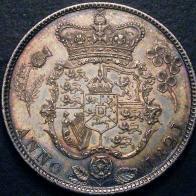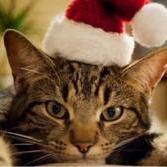|
|
The current range of books. Click the image above to see them on Amazon (printed and Kindle format). More info on coinpublications.com |
|
|
-
Content Count
57 -
Joined
-
Last visited
-
Days Won
9
david.bordeaux last won the day on April 24
david.bordeaux had the most liked content!
Community Reputation
143 ExcellentAbout david.bordeaux
-
Rank
---

Profile Information
-
Gender
Male
-
Location
Bath, Somerset
-
Interests
Florins, from Great Britain and the Empire
Recent Profile Visitors
-

Florin diameters
david.bordeaux replied to david.bordeaux's topic in British Coin Related Discussions & Enquiries
The Royal Mint Museum has confirmed that 28.30 mm is incorrect and according to "the data used in the Museum, sourced from the production records held in our archive" the diameter for all florins from 1893-1970 should be 28.50 mm. -
There seems to be great confusion about the diameter of the UK silver florin between 1893 and 1970. Some sources, including the Royal Mint shop and the Numista website, indicate a change of diameter in 1937, giving 28.30 mm for 1893-1936 and 28.50 mm for 1937-1970. Other sources give a single (but different!) diameter for all florins between 1893 and 1970: Krause (28.3 mm), Wikipedia (28.5 mm), Peter Davies (28 mm) and Matthew Dickinson (28.5 mm). Analysis of the coins in my collection refutes the idea of a small increase in diameter in 1937. On the contrary, there is a statistically significant decrease in diameter. I find no evidence for the existence of a florin measuring 28.30 mm of any date. For 1893 to 1936, the diameters measured range from 28.44 to 28.74 mm. From 1937 to 1970, from 28.36 to 28.57 mm. Assuming that the Mint measured in inches, my conclusion is that the correct (nominal) diameters for florins are as listed below: Godless 1849: nominal diameter 1.10 in = 27.94 mm (rounded to 28 mm) Gothic 1852-1887: 1.18 in = 29.972 mm (30 mm) Jubilee 1887-1892: 1.16 in = 29.464 mm (29.5 mm) 1893-1936: 1.125 in = 28.575 mm (28.6 mm) 1937-1970: 1.12 in* = 28.448 mm (28.4 mm) *Another possibility is that the diameter was “metricated” in 1937 to 28.50 mm Unfortunately the Coinage Acts give only the weight and fineness of each denomination, and not the diameter. Any thoughts on this would be gratefully received.
-

1897 Penny - NGC calls these two High Tide, seems incorrect
david.bordeaux replied to SilverAge3's topic in British Coin Related Discussions & Enquiries
I have since discovered that George de Saulles died of peritonitis after surgery for appendicitis. -

1897 Penny - NGC calls these two High Tide, seems incorrect
david.bordeaux replied to SilverAge3's topic in British Coin Related Discussions & Enquiries
In fact he was only 41. So far I have only found that he died after a "very short illness". In his obituary in the Numismatic Chronicle, his former employer John Pinches suggests that overwork contributed to his death: "It is to be feared that his devotion to his art, which kept him working early and late, weakened a constitution never very robust and helped on the end so much to be deplored." -

1897 Penny - NGC calls these two High Tide, seems incorrect
david.bordeaux replied to SilverAge3's topic in British Coin Related Discussions & Enquiries
I recently bought this 1895 penny, completely outside my usual area of interest, as I'm doing some research into George de Saulles. I know next to nothing about pennies, but assume from the price I paid that this is the more common variety of high/low tide on the reverse? -
 david.bordeaux started following
1887 Gothic Florin varieties,
Florin diameters,
1897 Penny - NGC calls these two High Tide, seems incorrect and and 2 others
david.bordeaux started following
1887 Gothic Florin varieties,
Florin diameters,
1897 Penny - NGC calls these two High Tide, seems incorrect and and 2 others
-

TICKET CENTRAL
david.bordeaux replied to Rob's topic in British Coin Related Discussions & Enquiries
Possibly Raymond Carlyon-Britton (died April 1960), son of P.W.P.? -

Latest bargain from the Royal Mint shop
david.bordeaux replied to david.bordeaux's topic in British Coin Related Discussions & Enquiries
Newly listed, a 1951 crown (complete with a shabby ink-stained cardboard case) for just 250 pounds plus postage. Rush before someone snaps it up! -

"onc" tenth florins
david.bordeaux replied to david.bordeaux's topic in British Coin Related Discussions & Enquiries
An examination of the collection at the British Museum revealed one very clear example of "onc": the 1857. This is catalogued as "possibly a proof ? according to D. Fealy" and it undoubtedly has proof-like fields and is in FDC condition. I regard this as further evidence in favour of an error in die preparation (and against the theory of simple die-fill - proofs are not made from worn dies...). As always, any thoughts welcome - and does anyone know anything about "D. Fealy"? Postscript: it is perhaps natural that the opportunity to handle and examine such splendid coins in museum collections initially evokes feelings of envy in the collector. But it soon gives way to the more rational analysis that such specimens are really best off in a public collection that is accessible to all - and not, thank goodness, encapsulated in plastic. -

"onc" tenth florins
david.bordeaux replied to david.bordeaux's topic in British Coin Related Discussions & Enquiries
Interesting that there was a trace of the missing bar, as it is completely missing in the examples I found on auction sites. This contrasts with the so-called xxr error in the 1881, where there is almost always a trace of the missing serif. In both cases, I think a broken punch is more likely than die fill, given that only specific letters are affected. Also interesting that florins were being catalogued as "onc" as early as 2005-7. Does anyone know when onc florins were first spotted? All I know is that they are in the 7th edition of ESC (2020) but not in the 4th edition (1974). -
I wanted to pick your collective brains on the “onc tenth” florins of 1853-1860, and possible theories on how the error came about. 1. Is it a “c” or an “e” with the oblique bar missing? A comparison of the “e” and “c” on the obverse seems to show a slight difference in the width of the letters. 2. If it’s an “e” with the bar missing, is this due to die fill? The oblique bar is very fine, so this could be a possible explanation. But if so, why does it only affect the “e” in “one” and not that in “tenth” (or the “e” in “One florin”, for that matter)? 3. Whether it’s a “c” or an “e” with a missing bar, could it be that a wrong or faulty puncheon was chosen when sinking the die? But again, why only the “e” in “one”? 4. Is it possible that there were puncheons for the entire word “one”, one of them was faulty, and that this was occasionally used over the course of 7 years when sinking new reverse dies? Each pair of dies produced only around 25,000 coins at the time, so the 1853 florin alone (mintage nearly 4 million) would have required upwards of 150 dies. 5. If 4 is the correct explanation, it could also explain the sudden disappearance of the error in 1860 – the faulty puncheon was detected and destroyed, or it wore out and was discarded. 6. A quick survey of auction archives would suggest that the error is more common than might be inferred from Bull. ESC 7th edition Heritage London Coin Auctions Noonans Spink 1853 “scarce” 2 3 1 1 1854 “4 seen” 1 9 1 1 1855 “5 seen” 1 1856 “7 seen” 1 1857 “6 seen” 1 1858 “4 seen” 1859 Not recorded 1860 “5 seen” 2 2 Number of examples of “onc tenth” florins offered at four auction houses between 2010 and 2023. With the exception of London Coins, most were not catalogued as “onc”. Any thoughts or insight on this would be much appreciated.
-

more FAKES
david.bordeaux replied to numismatist's topic in British Coin Related Discussions & Enquiries
And another in Noonan's sale on 10 May, Lot 103. But I'm not entirely convinced that these 1864 florins (all with obverse die no. 64) are fakes. Apart from the strange "n" in tenth, they look absolutely spot on (unless I'm missing something). Could they simply be genuine coins with an error on the reverse die that was paired with obverse die no. 64? -

1862 Gothic florin at Noonan's sale today (4 April)
david.bordeaux posted a topic in British Coin Related Discussions & Enquiries
Any thoughts about this 1862 Gothic florin, which went for £360 + BP at today's Noonan's sale? My suspicions were raised by the "leg" instead of "reg" error and the weak strike of the last "i" in the date. -

1887 Gothic Florin varieties
david.bordeaux replied to david.bordeaux's topic in British Coin Related Discussions & Enquiries
And the second from 1980: Dickinson, M. J., 1980.pdf -

1887 Gothic Florin varieties
david.bordeaux replied to david.bordeaux's topic in British Coin Related Discussions & Enquiries
Thanks very much, this is very helpful. I have managed to dig out the Dickinson articles. Here is the first one from 1978: Dickinson, M. J., 1978.pdf -

1887 Gothic Florin varieties
david.bordeaux posted a topic in British Coin Related Discussions & Enquiries
Can anyone confirm that there is actually only one variety of 1887 Gothic Florin? Older reference books list two varieties, one with 33 arcs (like the 1881-1886 florins) and another with 46 arcs. My copy of ESC (4th edition, 1974), has ESC865 (33 arcs) rarity “S” and ESC866 (46 arcs) rarity “R”. Davies (1982) lists No. 779 (33 trefoils) with an asterisk, meaning “to be confirmed” and No. 780 (46 trefoils) valued at £155 (!) in mint state. Bull (7th edition, 2020) lists only No. 2913 (46 arcs) with rarity “R”. Coin Year Book 2023, meanwhile, lists “34 arcs” at £800 in UNC and the 46 arcs at £1000! I suspect that the 33/34 arcs variety doesn’t exist, but would be grateful for any clarification.
 Coinpublications.com
Coinpublications.com








